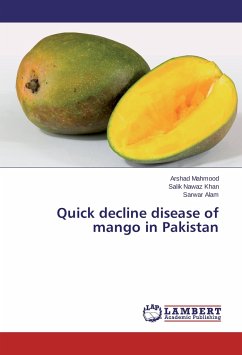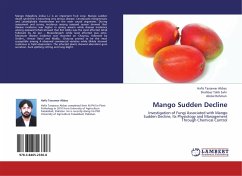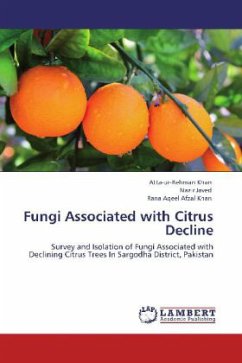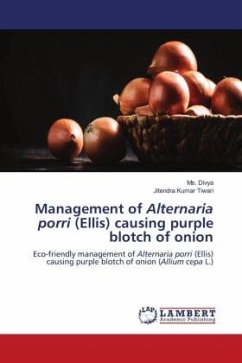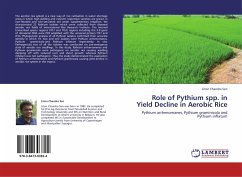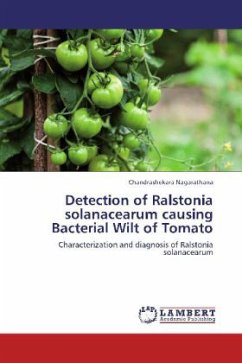The decline problem is becoming very common and severe in the mango and guava orchards of Pakistan. It causes substantial losses to the orchards.The overall effect of decline with accordance to incidence and severity on mango was more than that of guava. The average disease incidence varied with varieties of mango and guava. There are some pathogenic fungi which isolated from soil samples of mango and guava declined orchards. These include Ceratocystis fimbriata, Botryodiplodia theobromae, Fusarium solani, Nattrassia mangiferae and Fusarium oxysporum f.sp psidii. These fungi were identified on the basis of spores, hyphae, conidia and conidiophores etc. by using florescent microscope. All these fungi proved to be pathogenic when inoculated on mango and guava plants. The fungus Trichoderma harzianum proved to be the best retardant against all the isolated pathogenic fungi.
Bitte wählen Sie Ihr Anliegen aus.
Rechnungen
Retourenschein anfordern
Bestellstatus
Storno


